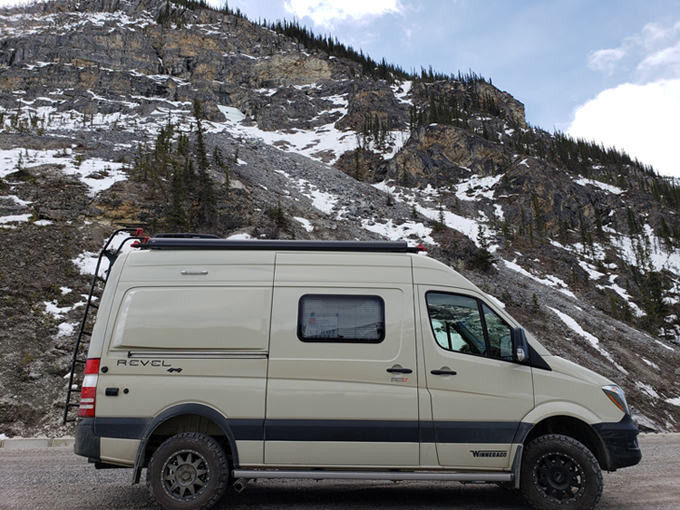Proper preparation and gear are essential to avoid winter camping problems.
Let’s look at five winter camping challenges and how to avoid them.

1. Keeping holding tanks from freezing
After a weekend of winter camping, the next step is to pull into the dump station to empty your tanks. You then pull the dump valve and nothing happens as the contents are frozen.
Now, you will have to wait until they thaw before you can dump the waste. To avoid this, consider using a holding tank heater. They are similar to electric blankets and attach to the underside of the holding tanks with adhesive.
If you’re just an occasional winter camper, pour non-toxic RV Antifreeze in your tanks through the P-traps or toilet. This will keep the contents slushy. Some RVers recommend using rock-salt, but it can corrode metal parts in the gray and black plumbing systems.
2. Maintaining heat
Regardless of how well you seal up your windows and vents to keep out the cold, you will still need an adequate heat source to keep your RV from freezing up.
This is just one of the winter camping problems you’ll face. To overcome this, your built-in forced-air furnace should always be the primary source as the ducts are routed to keep the plumbing from freezing and keeping the occupants warm.
Further, a secondary option is oil-filled electric heaters. They emit a mild radiant heat, are essentially noise-free, and present little fire hazards.
Catalytic Safety Heater, which run on propane rather than electricity, offer radiant heat and operate safely below the combustion level of flammable materials. Also, finding out how to effectively maintain power when winter camping is also pertinent to enjoying cold winter camping.
3. Sealing windows, vents, and skylights
How to find and prevent leaks in your RV is important any time of the year. But during winter it’s essential to keep yourself and your plumbing system warm by keeping the warm air in.
So, while leaks need to be detected (and fixed), you also need to increase insulation for winter camping. Windows, roof vents, and skylights are good places to start. The majority of RV windows are single-pane and many don’t seal well. One option is to install storm windows (if offered by the manufacturer).
Another solution is to insert heat shrink film on the insides of the windows. This is a clear film that you cut to size, stretch over your windows, and then heat shrink with a hairdryer. It’s available at most home improvement stores.
Roof vents and skylights are the next places to insulate. Most RV accessory stores sell RV vent cushions, which fit into standard roof vents. They can simply push up in place. For larger openings like skylights, vent cushions can be custom made to fit precise sizes.
4. Ensure a fresh water supply
Winter camping problems also extend to keeping a supply of fresh water. If you hook up to the campgrounds water spigot, you may freeze your hose.
To offset this, utilize an electrically-heated RV hose, which is basically a hose with built-in heat tape.
Another option is to leave a faucet dripping as moving water doesn’t easily freeze. If you do this, have your gray tank open or a significant gray tank capacity. Or, fill your freshwater tank and utilize your water pump.
When your fresh water tank runs dry, refill it with the campground spigot. Also, drain or store the water hose somewhere warm between tank fillings.
5. Getting your fridge to run properly
Who would think keeping food cold would e a problem when winter camping?
Two problems can possibly crop up. The first is the mixture of chemicals and fluids in the refrigerator’s cooling unit can start turning into a gel below 20° F. This slows down the recirculating and cooling process.
Another potential problem is the refrigerator thermostat sensor may sense cold air coming through the exterior refrigerator vents, rather than the cold air in the food box. This may cause the refrigerator to cycle-off.
So, to avoid these winter camping problems, block the first two or three top vent slots of the exterior refrigerator access door. This will keep cold air from the back of the refrigerator.
Don’t forget to remove the obstructions after your campout. For your refrigerator’s thermostat sensor, use a nonflammable material in the event it might come loose and contact the refrigerator burner or electric heating element.
Once you realize these issues and start enjoying yourself, you’ll soon find out why RVing in winter can offer great experiences.
Article Contribution of: Dave Helgeson, RV Life Magazine
Original Article can be found here: https://rvlife.com/how-to-avoid-winter-camping-problems-in-your-rv/
Additional Posts you may like: